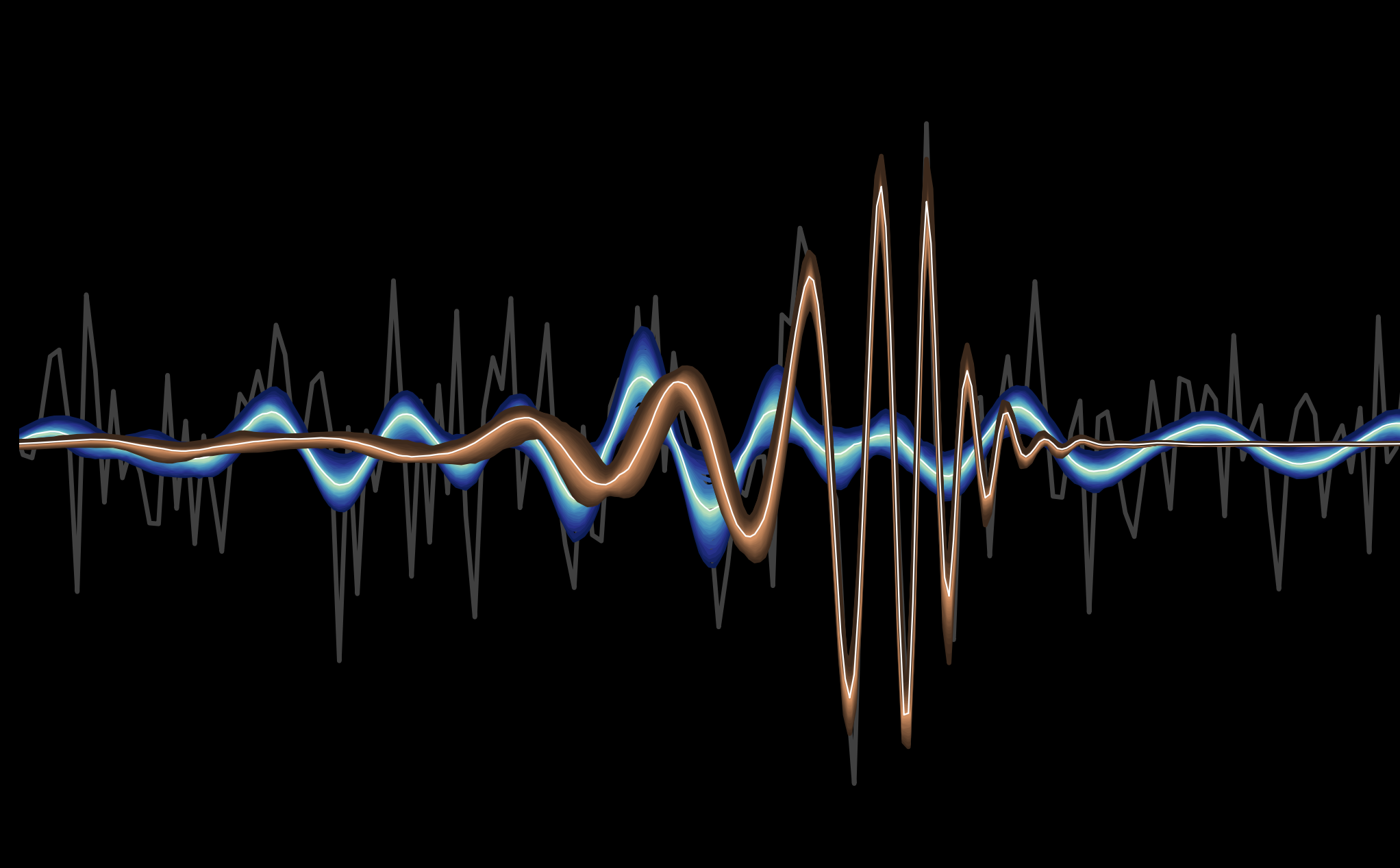
Projects
BayesWave
Pipeline for gravitational wave data analysis
PI: Katerina Chatziioannou, Division of Physics, Mathematics, and Astronomy (PMA)
SASE: Howard Deshong, Scholar
Einstein's General Theory of Relativity predicts that cataclysmic events, such as supernovae or collisions of neutron stars or black holes, can produce ripples in space-time known as gravitational waves. The Laser Interferometer Gravitational-Wave Observatory (LIGO) is an experiment designed to detect these waves. LIGO operates two kilometer-scale laser interferometers in Hanford, Washington and Livingston, Louisiana. The detectors are incredibly sensitive—they are kilometers long, and measure changes in length far smaller than an atom's width—so scientists and engineers have put tremendous effort toward cleaning up noise in the data, both through careful design of the detectors and through postprocessing after data has been recorded. These efforts paid off: in 2015, data from these interferometers contributed to the first detection of a gravitational wave.
BayesWave is one of LIGO's major postprocessing tools. It uses Bayesian statistical techniques to break down the detector data into ambient noise, detector glitches, and actual signals from gravitational waves. The BayesWave pipeline has seen wide use by gravitational wave physicists around the world. The Schmidt Academy collaborated with LIGO Lab to redesign BayesWave from scratch in modern C++, while adding additional analysis features.
This new implementation of BayesWave runs up to 2.5x faster without parallelism than the previous implementation, which was written in C; with parallelism, it runs 10x faster in a production environment. This performance boost comes from a complete system redesign, along with myriad systems-based and mathematical optimizations: From minimizing memory allocations and parallelizing code using OpenMP, to re-parameterizing high-dimensional probability distributions so they can be sampled more quickly. This high-speed system will let scientists analyze more events in a given time, which will be valuable as LIGO improves its detectors and observes events more frequently.
The redesign does not sacrifice usability for speed. The new BayesWave implementation prioritizes code clarity and extensibility so that both gravitational wave researchers and software developers can now more quickly understand the work and implement new analysis techniques. It also features new Python bindings that let researchers incorporate BayesWave into Python scripts and Jupyter notebooks for ad-hoc analyses.
This fast, easy-to-edit software prepares LIGO for the future of gravitational wave astronomy: A future where more sensitive instruments detect events more often, and where new analysis methods reveal previously unseen astronomical phenomena.

Caption: Using BayesWave to model a gravitational wave signal while separating it from a detector glitch. In gray is whitened time-domain data from an event in LIGO's Livingston, Louisiana detector. The event, known as GW191109, is thought to record the collision of two precessing black holes—but the data is difficult to analyze because a large detector glitch happened during the event. The blue waveform is BayesWave's 90% credible interval for that detector glitch, with the median glitch in white. The gold waveform is BayesWave's 90% credible interval for the true gravitational wave signal, with the median signal in white. BayesWave modeled the glitch as a sum of sine-Gaussian wavelets. BayesWave modeled the signal using IMRPhenomXPHM, a phenomenological black hole collision model. Using these models, BayesWave not only separated the signal from the glitch, but it also produced estimates from IMRPhenomXPHM for the event's physical parameters, such as the black holes' masses and spins. The previous implementation of BayesWave was not compatible with IMRPhenomXPHM.